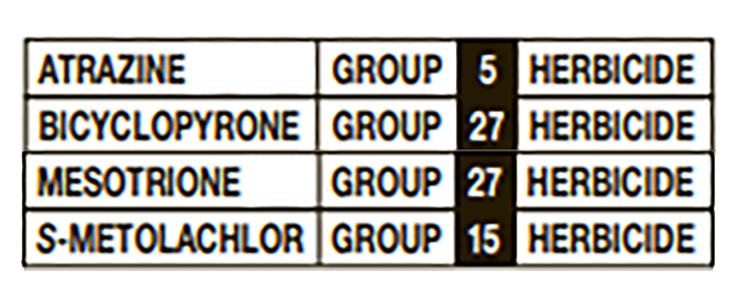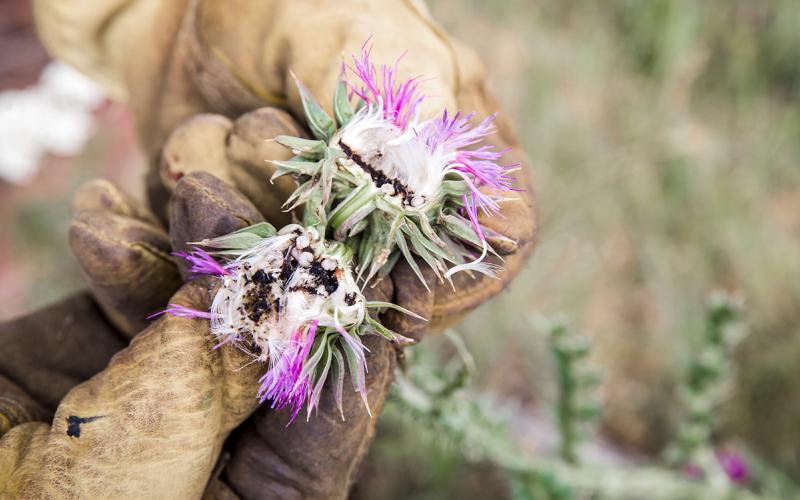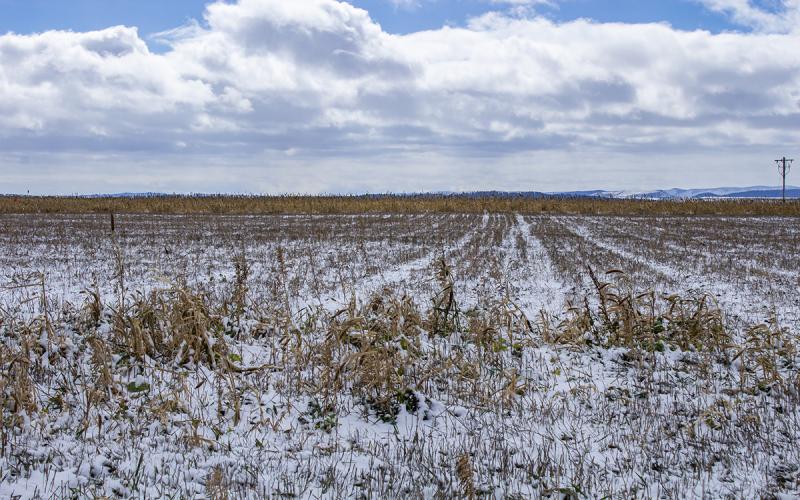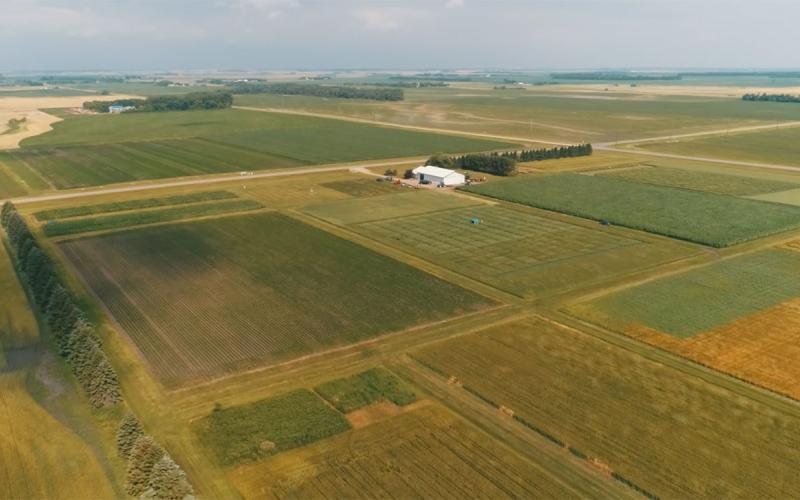Written collaboratively by Eric Jones, Philip Rozeboom, David Vos, and Jill Alms.
Aside from active ingredients and tradenames, herbicides are often classified by “mode of action” and “site of action.” The mode of action broadly describes how the herbicide affects the weeds, while the site of action describes the enzyme or process inhibited. For example, Mesotrione (Callisto) is a pigment inhibitor (or bleacher) (mode of action) that inhibits the HPPD enzyme (site of action).
Herbicide Group Numbers
Herbicides are also broadly classified under various group numbers. For example, Mesotrione (Callisto) is a group 27 herbicide, while glyphosate (Roundup) is a group 9 herbicide. The herbicide group is required to be on the herbicide label (Figure 1). Premixes that contain more than one herbicide will list all of the herbicide group numbers.

The intent of providing the herbicide group number and mode and/or site of action is to help develop herbicide plans that reduce the selection pressure on herbicide-resistant weeds. Using a single herbicide group year after year will eventually lead to only resistant weeds remaining in the field. The use of multiple herbicide groups will reduce the selection of herbicide-resistant weeds by having another effective herbicide to control the herbicide-resistant weed. Resistance management aside, the utilization of multiple herbicide groups can improve the effectiveness of weed management. While tank-mixing herbicides and rotating herbicide groups helps reduce selection pressure on resistant weeds, other non-herbicide tactics are needed to further reduce the selection pressure. The addition of non-herbicide tactics often improves the overall effectiveness of a weed management plan.
Understanding Herbicide Activity
While the multiple ways to classify herbicides makes it easier for applicators to select unique herbicides, basic knowledge of herbicide activity is still critical to select herbicides that are effective on weeds present. Group 1 herbicides, including clethodim (Select) and quizalofop (Assure), only have activity on grass weeds; therefore, the addition of these herbicides is not effective for managing broadleaf weeds, nor herbicide resistance in broadleaf weeds. While Group 15 herbicides, including S-metolachlor (Dual Magnum) and acetochlor (Harness), are effective on waterhemp; these herbicides do not control large-seeded broadleaf weeds (for example, cocklebur and velvetleaf). Below is a table that provides a brief description of each herbicide group commonly used in South Dakota crop production (Table 1).
|
|
Description |
|---|---|
|
|
Postemergence activity. Controls grass weeds only. |
|
|
Pre- and postemergence activity. Widespread resistance to this group (i.e., kochia and waterhemp). Still has utility to manage some weeds. |
|
|
Preemergence activity only. Controls mostly grass weeds but some activity on small-seeded broadleaf weeds. |
|
|
Pre- and postemergence activity. Controls mostly broadleaf weeds. |
|
|
Pre- and postemergence activity. Mostly control broadleaf weeds; some activity on grass weeds |
|
|
Postemergence activity. Controls only broadleaf weeds. |
|
|
Non-selective herbicide. Apply as a burndown or postharvest herbicide. Safely used in Roundup Ready crops. |
|
|
Non-selective herbicide. Safely used in Liberty Link crops. |
|
|
Pre- and postemergence activity. |
|
|
Preemergence activity only. Controls mostly grass weeds but some activity on small-seeded broadleaf weeds. |
|
|
Postemergence activity. Non-selective, used primarily as a burndown herbicide. |
|
|
Pre- and postemergence activity. Controls broadleaf and grass weeds. |
Additional information available in SDSU Extension's South Dakota Pest Management Guides.
Additional Resources
While the provided table can be used as a quick reference, other materials should be utilized if there are concerns or questions about specific active ingredients and control of specific weed species. The United Soybean Board’s Take Action Pesticide Resistance Management plan provides an Herbicide Clasification Chart of many active ingredients with the corresponding herbicide group, mode of action, and site of action. Also, refer to the latest South Dakota Pest Management Guides for an extensive list of herbicides labeled for South Dakota that provides the group number for each herbicide and target species controlled.


